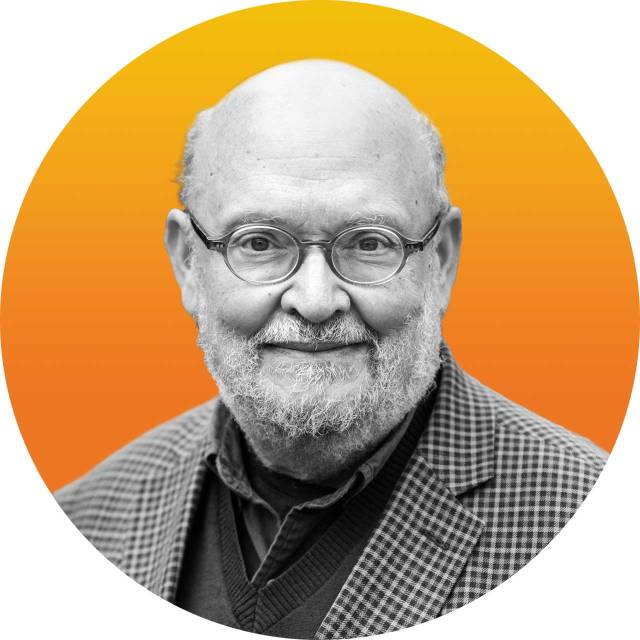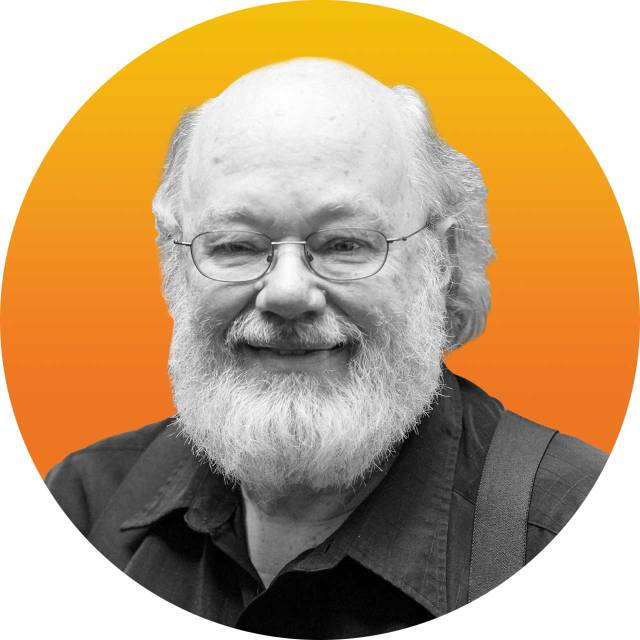Sixteen Princeton University faculty members were transferred to emeritus status earlier this year by the Board of Trustees
Sixteen Princeton University faculty members were transferred to emeritus status earlier this year by the Board of Trustees. Transfers were effective July 1, 2022, except where noted.
- Leonard Barkan, the Class of 1943 University Professor of Comparative Literature
- John Borneman, professor of anthropology and director of the Program in Contemporary European Politics and Society
- David Paul Dobkin, the Phillip Y. Goldman ’86 Professor in Computer Science
- Denis Feeney, the Giger Professor of Latin and professor of classics
- Martha Himmelfarb, the William H. Danforth Professor of Religion
- Ruby Lee, the Forrest G. Hamrick Professor in Engineering
- Elizabeth “Anne” McCauley, the David Hunter McAlpin Professor of the History of Photography and Modern Art and professor of art and archaeology
- Stewart Prager, professor of astrophysical sciences
- Martha Sandweiss, professor of history and founder and director of the Princeton and Slavery Project
- Jeffrey Schwartz, professor of chemistry
- Robert Sedgewick, the William O. Baker ’39 Professor of Computer Science
- Christopher Sims, the John J.F. Sherrerd ’52 University Professor of Economics
- James Smith, the William and Edna Macaleer Professor of Engineering and Applied Science and professor of civil and environmental engineering
- Shivaji Lal Sondhi, professor of physics
- Edwin Turner, professor of astrophysical sciences
- Eric Wieschaus, the Squibb Professor in Molecular Biology and professor of molecular biology and the Lewis-Sigler Institute for Integrative Genomics

Leonard Barkan
Leonard Barkan is internationally known for his scholarship and broad research interests in comparative literature, including literature of the English and Italian Renaissance, drama, theater, food and wine, urban travel literature, the relationship between literature and art, and the history of archaeology and of Rome.
Barkan joined the Princeton faculty in 2001 after teaching previously at the University of California-San Diego, Northwestern University, University of Michigan and New York University.
He has served as editor of eight volumes of Renaissance drama and early modern thought and wrote 10 books that reflect the many facets of his scholarship.
His titles include “The Gods Made Flesh: Metamorphosis and the Pursuit of Paganism” (1986), “Unearthing the Past: Archaeology and Aesthetics in the Making of Renaissance Culture” (1999), “Michelangelo: A Life on Paper” (2010), “Mute Poetry, Speaking Pictures” (2012), “Berlin for Jews: A Twenty-First-Century Companion” (2016), “The Hungry Eye: Eating, Drinking, and European Culture from Rome to the Renaissance” (2021), and “Reading Shakespeare, Reading Me” (2022).
Barkan served as director of Princeton’s Society of Fellows in the Liberal Arts from 2002 to 2009 and as chair of the Department of Comparative Literature from 2010 to 2014. He received Princeton’s Howard T. Behrman Award for Distinguished Achievement in the Humanities in 2010.
Among his many honors are the PEN/Architectural Digest Award for Literary Writing on the Visual Arts, the Berlin Prize, the Harry Levin Prize, and others bestowed by the Modern Language Association, the American Comparative Literature Association, the College Art Association, the American Academy of Arts and Letters, and Phi Beta Kappa.
Barkan received his bachelor’s degree from Swarthmore College, a master’s degree from Harvard University and a Ph.D. from Yale University.

John Borneman
John Borneman is among the most well-known and groundbreaking theorists within the subfields of legal, political and psychological anthropology, having conducted fieldwork in Lebanon and Syria and throughout Central Europe.
He came to Princeton in 2001 after teaching at Cornell University for a decade. His early work focused on a divided Berlin, including the first two of his nine books, “After the Wall: East Meets West in the New Berlin” (1991) and “Belonging in the Two Berlins: Kin, State, Nation” (1992). His other books on Germany include “Sojourners: The Return of German-Jews and the Question of Identity” (1995), co-authored with Jeffery Peck; “Settling Accounts: Violence, Justice, and Accountability in Postsocialist Europe” (1997); “Subversions of International Order: Studies in the Political Anthropology of Culture” (1998); and “Cruel Attachments: The Ritual Rehab of Child Molesters in Germany” (2015).
Borneman began his ethnographic work in Lebanon and Syria after arriving in Princeton. The monographs that emerged from that research include “Syrian Episodes: Sons, Fathers, and an Anthropologist in Aleppo” (2007), “Al-jinayah al-siyasiyyah wal-silm al-ijtimaei” (2007), and “Political Crime and the Memory of Loss” (2011), a comparative analysis of Germany and Lebanon.
He edited six volumes and published over 92 peer-reviewed articles and book chapters. He also co-produced a 1993 film, “The Return of German-Jews and the Question of Identity in East Germany.”
Borneman received two Fulbright professorships at Aleppo University in Syria and Humboldt University in Berlin in addition to many grants, fellowships, residencies and prizes.
He received his bachelor’s degree from the University of Wisconsin-Madison, an M.A. from University of Washington and a Ph.D. from Harvard University.

David Paul Dobkin
David Paul Dobkin, a co-founder of the field of computational geometry, served as Princeton’s dean of the faculty from 2003 to 2014 and also as chair of Princeton’s Department of Computer Science from 1994 to 2003.
Dobkin joined Princeton’s engineering faculty in 1981 after teaching at Yale University and University of Arizona, and he became a professor in computer science when the department was formed in 1985.
In addition to co-founding the field of computational geometry with his first Ph.D. student, Michael Shamos, Dobkin pioneered computer graphics at Princeton. His research breakthroughs include the “Dobkin-Kirkpatrick hierarchy,” an algorithmic idea that revolutionized the computational treatment of convex objects in three dimensions.
A fellow of the Association of Computing Machinery, Dobkin has been awarded Guggenheim and Fulbright fellowships. His leadership in the field led him to chair the governing board of the Geometry Center. Dobkin has served as a member of the Sloan Research Fellowship Committee for Computer Science, and he has been a visiting researcher at companies including Bell Labs, AT&T Research and Xerox PARC.
Dobkin also has served as an adviser to the governments of Denmark, Israel and Singapore. The author of numerous papers, he is a member of the editorial boards of several professional journals.
Dobkin received a bachelor’s degree from the Massachusetts Institute of Technology and a Ph.D. from Harvard University.

Denis Feeney
Denis Feeney, a pre-eminent Latinist, has shaped and influenced contemporary thought in Latin literature and Roman culture through his scholarly work.
Before coming to Princeton in 2000, Feeney held faculty positions at New College, University of Oxford, University of Wisconsin-Madison, University of Bristol and University of Edinburgh.
His four books and 50 articles span the fields of Latin prose and verse, Roman religion and Roman history. Together with Stephen Hinds, he edited the highly influential series “Roman Literature and its Contexts” (1993). His books include “The Gods in Epic: Poets and Critics of the Classical Tradition” (1991), “Caesar’s Calendar: Ancient Time and the Beginnings of History” (2007), and “Beyond Greek: The Beginnings of Latin Literature” (2016).
His collected papers were published in two volumes by Cambridge University Press under the title “Explorations in Latin Literature” (2021).
Feeney served as chair of Princeton’s Department of Classics from 2003 to 2009. He also was director of the Program in Humanistic Studies and the Stewart Seminars in Religion, and served as chair of the Humanities Council.
Among his awards and honors he received the Sather Professorship of Classical Literature at University of California-Berkeley, Guggenheim and American Council of Learned Society fellowships, and the Howard T. Behrman Award for Distinguished Achievement in the Humanities at Princeton.
He is a past president of the American Philological Association, a fellow of the American Academy of Arts and Sciences and a corresponding fellow of the British Academy.
Feeney received bachelor’s and master’s degrees from the University of Auckland and a D.Phil. from Oxford University.

Martha Himmelfarb
Martha Himmelfarb is a leading scholar of ancient Judaism and early Christianity. A member of Princeton’s faculty for more than 40 years, she joined the University in 1978.
Himmelfarb served as the director of the Program in Judaic Studies from 2013 to 2020 and as chair of the Department of Religion from 1999 to 2006. She played a key role in establishing the certificate program in Judaic studies at Princeton and in the creation of the Ronald O. Perelman Institute for Judaic Studies.
Her scholarly work has had a profound impact on the study of ancient Judaism and early Christianity, challenging and reorienting the long-standing paradigm that assumed the inevitability of Judaism and Christianity diverging into distinct religious traditions. Her research has pioneered new ways of understanding this ongoing relationship from the Second Temple period through the Middle Ages.
Himmelfarb’s books include “A Kingdom of Priests: Ancestry and Merit in Ancient Judaism” (2006), “Jewish Messiahs in a Christian Empire: A History of the Book of Zerubbabel” (2017), “Ascent to Heaven in Jewish and Christian Apocalypses” (1993) and “Tours of Hell: An Apocalyptic Form in Jewish and Christian Literature” (1983). She collected essays on various topics in the study of ancient Judaism in “Between Temple and Torah: Essays on Priests, Scribes, and Visionaries in the Second Temple Period and Beyond.”
Himmelfarb is a recipient of the University’s Behrman Award for Distinguished Achievement in the Humanities. She is a fellow of the American Academy of Jewish Research, the Society of Biblical Literature and the Association for Jewish Studies. She has received grants from the National Endowment for the Humanities and the New Jersey State Council for the Humanities, was awarded a Guggenheim fellowship, and was named an Old Dominion Research Professor in the Council of the Humanities.
Himmelfarb earned her bachelor’s degree from Barnard College and her Ph.D. from the University of Pennsylvania.

Ruby Lee
Ruby Lee joined the Princeton faculty in 1998 following an illustrious 17-year career designing computers as a chief architect at Hewlett-Packard.
Her work at Princeton explores how the security and performance of computing systems can be significantly and simultaneously improved by hardware architecture, and her designs of secure processor architectures have strongly influenced industry security offerings while also inspiring new generations of academic researchers in hardware security, side-channel attacks and defenses, secure processors and caches, and enhanced cloud computing and smartphone security.
Lee briefly taught at Stanford University before joining Hewlett-Packard. Among many achievements, she is known in the computer industry for her design of the HP Precision Architecture (HPPA or PA-RISC) that powered Hewlett-Packard’s commercial and technical computer product families for several decades, and was widely regarded as introducing key forward-looking features. In the 1990s she spearheaded the development of microprocessor instructions for accelerating multimedia, which enabled video and audio streaming, leading to ubiquitous digital media.
Lee established the Princeton Architecture Laboratory for Multimedia and Security, and in industry, she founded hardware security workshops and conferences. She is the author of “Security Basics for Computer Architects” (2013) and has contributed chapters to other books including “Secure Cloud Computing” (2014).
She has served on national committees to improve cybersecurity and co-authored reports to the White House, government agencies and Congress to increase awareness for cybersecurity and funding for security research.
Lee was elected to the American Academy of Arts and Sciences in 2020. She is a fellow in the Association for Computing Machinery and Institute of Electrical and Electronics Engineers.
Lee received a bachelor’s degree from Cornell University, and a master’s degree and Ph.D. from Stanford University.

Elizabeth “Anne” McCauley
Elizabeth “Anne” McCauley explores the origins of photography as a modern medium, as well as the varied motivations of its makers and consumers within the complex conditions of modernity, illuminating the world-changing impact of photography.
McCauley joined the Princeton faculty in 2002 after teaching at the University of New Mexico, where she served as assistant director of the art museum, and also at University of Texas at Austin and University of Massachusetts Boston.
Her work surveys photography across multiple spheres, from commercial photo studios to upper-class parlors, early cinema, avant-garde art galleries, the world of high fashion and World War I. Throughout her research and writing McCauley establishes how the history of photography is tied to the trajectories of other media, such as painting and printmaking, and the decisive role played by photography in the history and development of the fine arts and modern visual culture more broadly.
McCauley’s books include “The Steerage and Alfred Stieglitz” (2012), “Industrial Madness: Commercial Photography in Paris, 1848-1871” (1994), and “A.A.E. Disdéri and the Carte de Visite Portrait Photograph (1985).
At Princeton, McCauley began research on Clarence H. White, a leading photographer within the American Pictorialist movement, culminating in a major and widely praised exhibition and publication, “Clarence H. White and His World: The Art and Craft of Photography, 1895-1925.”
McCauley is an honorary member of the Royal Photographic Society. She has received grants and fellowships from the J. Paul Getty Museum, Smithsonian, American Council for Learned Societies, the Massachusetts Foundation for the Humanities and the National Endowment for the Arts.
McCauley received a bachelor’s degree from Wellesley College and a Ph.D. from Yale University.

Stewart Prager
Stewart Prager, a Princeton faculty member for 14 years and director of the Princeton Plasma Physics Lab for seven years, is an internationally recognized leader in the field of fusion energy research.
A pioneer in plasma physics, Prager is internationally known for experiments that have contributed to both fundamental knowledge and the design of fusion energy reactors — insights that are critical to the eventual goal of producing commercially viable fusion power plants.
Before joining Princeton’s faculty in 2009, Prager worked in industry for General Atomic Company in San Diego, then taught for 31 years and conducted critical research on basic plasma physics and magnetic confinement for fusion energy as the Dexter Professor of Physics at University of Wisconsin.
Prager led research on the U.S. Department of Energy-funded Madison Symmetric Torus (MST) experiment, directing a group that was the first in the world to completely characterize the chaotic flow of the charged gases swirling within.
He also has led the Center for Magnetic Self-Organization in Laboratory and Astrophysical Plasmas. Funded by the National Science Foundation, the “physics frontier center” involves Wisconsin, Princeton and five other institutions.
At Princeton, Prager co-founded the Max-Planck-Princeton Center for Plasma Physics and the Physicists Coalition for Nuclear Threat Reduction.
Prager has served on many prominent national panels and advisory committees. He chaired the Department of Energy’s Fusion Energy Sciences Advisory Committee and the Division of Plasma Physics of the American Physical Society. He was president of the University Fusion Association and a member of the fusion review panel of President Bill Clinton’s Committee of Advisers on Science and Technology.
Prager received bachelor’s degrees from Queens College of the City University of New York and from Columbia University. He earned his Ph.D. from Columbia.

Martha Sandweiss
Martha Sandweiss is known for her singular historical contributions to Princeton and to the field of American cultural history, especially the history of the American West.
Sandweiss began her career as curator of photography at the Amon Carter Museum in Fort Worth, Texas, where she oversaw one of the nation’s premier collections of 19th- and 20th-century American photographs. She took up the directorship at the Mead Art Museum at Amherst College and taught there for 20 years before coming to Princeton in 2009.
Her photographic studies of the American West include “Eyewitness to War: The Prints and Daguerreotypes of the Mexican War, 1846-1848” (1989), which she co-authored, and “Print the Legend, Photography and the American West” (2002), which received the Ray Allen Billington Award from the Organization of American Historians and the William P. Clements Prize from the Western History Association, among other awards.
Her other books include “Passing Strange: A Gilded Age Tale of Love and Deception Across the Color Line” (2010), which was honored by the National Book Critics Circle and the Organization of American Historians.
In 2013, she oversaw a research seminar at Princeton about the University’s connections to the institution of slavery, which evolved into the Princeton and Slavery Project.
The recipient of grants from the National Endowment for the Humanities, the American Council of Learned Societies, and the Rockefeller Foundation, Sandweiss consults widely on matters related to the use of visual images for historical research and writing. A past president of the Western History Association, she has also served on the boards of the Organization of American Historians, the American Antiquarian Society and the Society of American Historians.
Sandweiss received her bachelor’s degree from Harvard University and her Ph.D. from Yale University.

Jeffrey Schwartz
Jeffrey Schwartz is an organometallic chemist known for his work in reagent development, molecular electronics and cell-surface interactions. Among his distinguished scholarly achievements, he pioneered the field of organozirconium chemistry and provided major contributions to the development of phosphonate monolayers.
Schwartz arrived at Princeton in 1970, and spent his 52-year career on the Princeton faculty.
One of the chemical compounds he introduced for various transformations in organic synthesis was named after him: zirconocene chloride hydride, also known as “Schwartz’s reagent.”
His later work led to additional discoveries with important applications. In 2001, his lab introduced self-assembled layers of phosphonates (SAMPs) as a class of structurally viable, well-organized, dense coatings for metal oxides. They were the first examples of stable surface chemistry for titanium, which was previously thought to be impervious to such treatment, and are now widely applicable to biomedical and electronic devices.
His collaboration with chemistry Professor Steven Bernasek led to several highly cited articles detailing the surface chemistry of indium tin oxide and methods for controlling its electronic properties as a transparent electrode material.
Schwartz is a recipient of Princeton’s President’s Award for Distinguished Teaching.
Schwartz received his bachelor’s degree from Massachusetts Institute of Technology and his Ph.D. from Stanford University.

Robert Sedgewick
Robert Sedgewick is the founding chair of Princeton’s Department of Computer Science. A leader in the field of analytic combinatorics, Sedgewick also has been recognized for significant contributions to the teaching of computer science.
Sedgewick joined Princeton in 1985 after serving 10 years on the faculty at Brown University, where he also helped to establish the computer science department.
He has made fundamental research contributions in algorithms and data structures, analytic combinatorics and the scientific analysis of algorithms. His dissertation, “Quicksort,” was a landmark in the study of efficient algorithms for putting the elements of a list in order, resolving several open theoretical problems and introducing optimizations that remain in wide use.
While visiting Xerox PARC in the 1970s, he developed with Leo Guibas red-black trees, a novel data structure for organizing information for efficient retrieval that runs on billions of devices today.
Sedgewick served on the board of directors of Adobe Systems from 1990 to 2016 and also held visiting research positions at the Institute for Defense Analysis, INRIA (the French National Institute for Research in Digital Science and Technology) and Bell Laboratories.
He is author of 20 books, including “Algorithms” (1983), now in its fourth edition, which sold over a million copies. He also wrote with Kevin Wayne “Computer Science: An Interdisciplinary Approach.” Wayne collaborated on the latest edition of “Algorithms,” and both books are based on popular massive open online courses taught by both men.
Sedgewick’s “An Introduction to the Analysis of Algorithms and Analytic Combinatorics” (2009), written with Phillippe Flajolet, was awarded the Leroy P. Steele Prize for Mathematical Exposition.
Sedgewick and Wayne developed many introductory courses at Princeton. Sedgewick is a recipient of the School of Engineering and Applied Science’s Distinguished Teaching Award, the Phi Beta Kappa Teaching Award, and the Association for Computing Machinery’s Karl V. Karlstrom Outstanding Educator Award.
Sedgewick received his bachelor’s and master’s degrees from Brown University and a Ph.D. from Stanford University.

Christopher Sims
Christopher Sims, a 2011 Nobel Prize laureate in economic sciences, is best known for determining the dynamic effects of economic policies on the macroeconomy.
Sims taught at Harvard University, University of Minnesota and Yale University before arriving at Princeton in 1999.
He developed a statistical framework, the Structural Vector Autoregression (SVAR), that has become the standard for estimating dynamic causal effects in macroeconomics. His Nobel Prize cited his “empirical research on cause and effect in the macroeconomy.”
His statistical methods have become standard tools in empirical economics that can improve real economic policy and decision-making. While his work on vector autoregressions (VARs) is his most influential, he has made other fundamental contributions, including his work on the role of government debt on determining price level and on rational inattention in decision-making.
In addition to working with the International Monetary Fund as a visiting scholar, Sims has consulted with the Federal Reserve Bank of Philadelphia and Federal National Mortgage Association.
He is a past president of the Econometric Society and the American Economic Association, and a member of the American Academy of Arts and Sciences and National Academy of Sciences.
At Princeton, Sims twice served as the Department of Economics’ director of graduate studies. For seven years he served as co-chair of the Griswold Center for Economic Policy Studies.
Sims received his bachelor’s degree and Ph.D. from Harvard.

James Smith
James Smith is widely recognized as a leading expert on extreme flood hydrology, urban hydrometeorology and hydroclimatology. His interests include stochastic processes, rainfall, rivers and surface water hydrology.
Early in his career, Smith worked as a research scientist in hydrometeorology at the Hydrologic Research Laboratory at the National Oceanic and Atmospheric Association. He came to Princeton in 1990 as part of the then-Program in Water Resources, now known as Environmental Engineering and Water Resources, developing courses on hydrology and rivers that are still taught today.
His groundbreaking paper on the June 27, 1995, catastrophic rainfall in the central Appalachians shifted how experts in hydrometeorology think about extreme rainfall and the hydraulic computations of watershed discharge profiles based on radar rainfall data. His wife, Mary Lynn Baeck, developed the analytical tools for quantitative assessments of rainfall estimates for the storm.
Smith also is an expert on urban hydrology. He became a member of the multi-investigator Baltimore Ecosystem Study, funded through the National Science Foundation’s Long Term Ecological Research Program, in partnership with the University of Maryland and other institutions. His role was to study how storms and floods are altered by urbanization.
At Princeton, he joined the MIRTHE Photonics Sensing Center, testing novel sensor devices for observation of urban atmospheres and opening a new line of inquiry into how urban pollution and heat impact rainfall.
Smith served as departmental representative (now called the director of undergraduate studies) for the Department of Civil and Environmental Engineering and also as department chair for six years, beginning in 2011.
Among his many honors, he received the Hydrologic Sciences Medal from the American Meteorological Society and an Engineering Council Teaching Award. He also received a Fulbright fellowship early in his career.
Smith received his bachelor’s degree from University of Georgia and his Ph.D. from Johns Hopkins University.

Shivaji Lal Sondhi
Shivaji Lal Sondhi transferred to emeritus status on Sept. 1, 2021. He has worked across a wide range of topics in theoretical condensed matter physics, notably in the areas of topological phases of matter, strongly correlated electrons and quantum magnetism. Together with the condensed matter theory group at Princeton, Sondhi has been at the forefront of new discoveries and developments in the field over the past 15 years.
Sondhi joined the Princeton faculty in 1995. Among his many achievements, he is renowned for his discovery of topologically stable configurations, called skyrmions, in the quantum Hall effect, and also for his seminal work on magnetic monopoles in spin ice.
In addition to 150 publications on condensed matter theory, Sondhi has written scholarly and opinion articles on topics ranging from India’s nuclear bomb program to the challenges of higher education to the management of the COVID-19 pandemic in India.
He is a co-founder of the Princeton Center for Theoretical Science and one of its inaugural faculty fellows. He was named an Old Dominion Faculty Fellow of the Humanities Council at Princeton.
Sondhi is a recipient of the Alfred P. Sloan Research Fellowship, William L. McMillan Award from the University of Illinois for outstanding contributions in condensed matter physics, Bergman Award of the US-Israel Binational Science Foundation, and David and Lucille Packard Fellowship for Science and Engineering.
Sondhi received a bachelor’s degree from Hindu College, University of Delhi, a master’s degree from the State University of New York at Stony Brook and a Ph.D. from University of California-Los Angeles.
He was awarded a 2020 Leverhulme International Professorship at the University of Oxford, and following his retirement from Princeton, he will continue his research and teaching as Wykeham Professor in the Rudolf Peierls Centre for Theoretical Physics at the University of Oxford.

Edwin Turner
Edwin Turner has worked extensively in both theoretical and observational astrophysics, including galaxies, dark matter, quasar populations, the cosmic x-ray background, exoplanets and astrobiology. His research straddles the observational-theoretical boundary, with a particular interest in the use of modern statistical techniques to constrain fundamental questions in astrophysics.
Turner was a postdoctoral fellow at the Institute for Advanced Study and taught at Harvard University before joining Princeton’s faculty in 1978.
He has made important contributions to the understanding of dark matter, large-scale cosmic structure, gravitational lenses, the Cosmological Constant, quasar populations and evolution, and the properties of planets orbiting other stars.
His long series of collaborations include many with Japanese astronomers, and he has been instrumental in facilitating major astronomical surveys between Japanese and Princeton researchers including the Sloan Digital Sky Survey, the Hyper Suprime-Cam, the Strategic Exploration of Exoplanets and Disks with Subaru, the Coronagraph High Angular Resolution Imaging Spectrograph and the Prime Focus Spectrograph.
Turner served as director of the Council for International Teaching and Research at Princeton. For nine years he was director of the Apache Point Observatory 3.5-meter telescope. He also served on the Space Telescope Institute Council for nine years, including three years as chair, and on the board of directors of the Association of Universities for Research in Astronomy.
Turner received his bachelor’s degree from Massachusetts Institute of Technology and a Ph.D. from California Institute of Technology.

Eric Wieschaus
Eric Wieschaus transferred to emeritus status on Jan. 16, 2022. He is a recipient of the 1995 Nobel Prize in Physiology or Medicine for “discoveries concerning the genetic control of early embryonic development.”
Together with Christiane (Janni) Nüsslein-Volhard, who shared the prize, Wieschaus identified most of the genes that establish the blueprint of the Drosophila melanogaster (fruit fly) embryo, transforming the field of developmental biology. The same genes used to pattern the Drosophila embryo are also used by other animal groups, including humans.
Wieschaus came to Princeton in 1982 with his wife, Trudi Schüpbach, whom he met along with Nüsslein-Volhard while working at the Biozentrum at the University of Basel, and who also is an emeritus professor of molecular biology.
After arriving at Princeton, Wieschaus and his team systematically dissected the different genes controlling segment polarity during embryogenesis, providing insights into important cell signaling pathways that control a variety of developmental processes in vertebrates. These pathways also have also been shown to run amok in different diseases, such as cancer.
Wieschaus continued to open new areas of research at the interface of cell biology and biophysics, and made a number of discoveries on the mechanisms underlying complex developmental processes including the onset of zygotic transcription, gastrulation, cell intercalation and extension.
Wieschaus has worked as an investigator of the Howard Hughes Medical Institute and an adjunct professor at the former University of Medicine and Dentistry of New Jersey Robert Wood Johnson Medical School. He has served as an adviser to Damon Runyon-Walter Winchell Cancer Fund and received a Genetics Society of America Medal.
Wieschaus received his bachelor’s degree from University of Notre Dame and a Ph.D. from Yale University.

